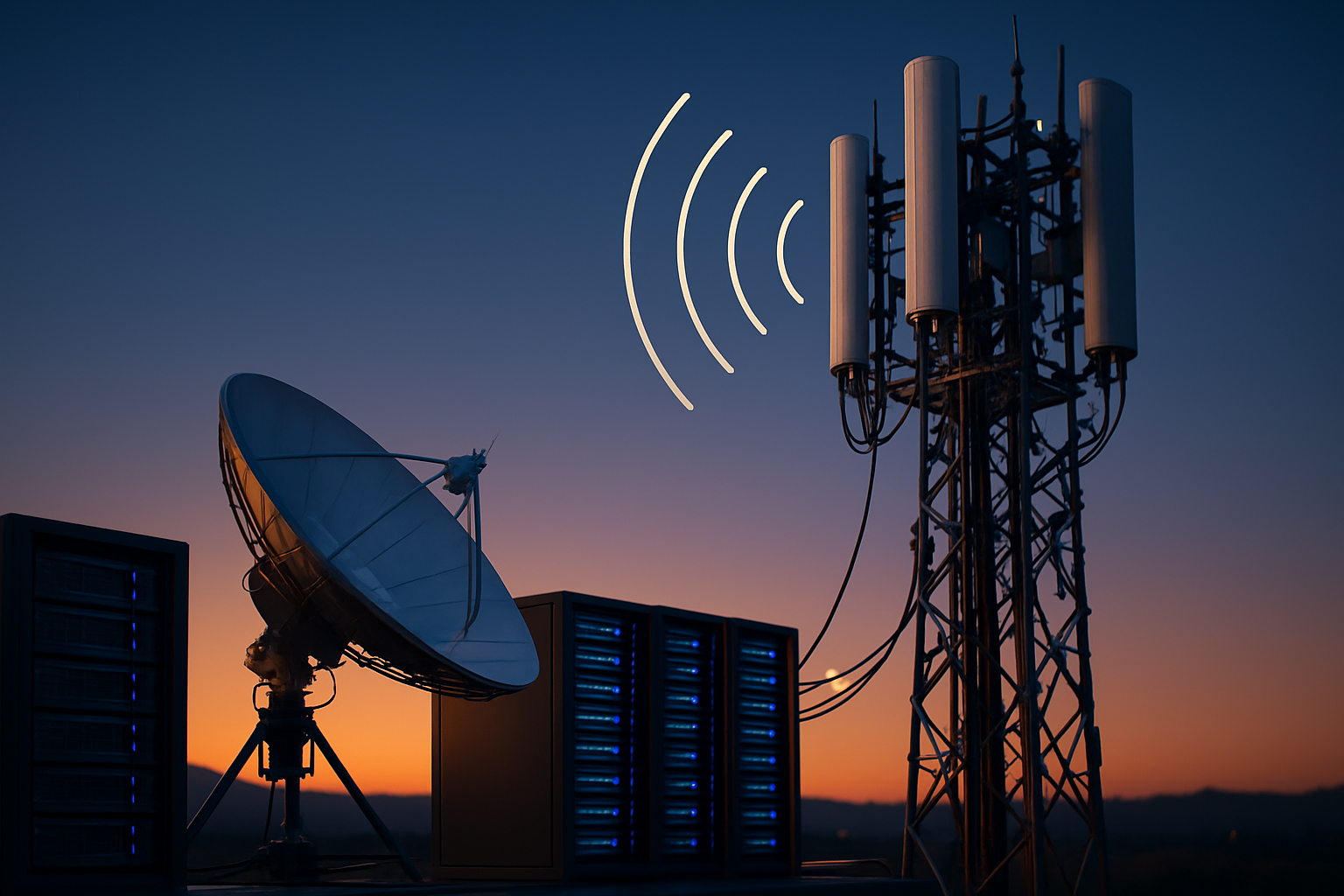Revolutionizing Spectrum Management: Dynamic Spectrum Allocation
The electromagnetic spectrum is a finite resource crucial for wireless communications. As demand for connectivity surges, innovative approaches to spectrum management are becoming essential. Dynamic Spectrum Allocation (DSA) emerges as a game-changing solution, promising to revolutionize how we utilize this precious resource. But what exactly is DSA, and how does it work? Let's dive into this cutting-edge technology that's reshaping the landscape of wireless communications.

The core principle behind DSA is cognitive radio technology, which allows devices to sense their radio environment and adapt their transmission parameters accordingly. These smart radios can identify unused portions of the spectrum, often referred to as “white spaces,” and dynamically switch to these frequencies as needed. This adaptability ensures that spectrum is used more efficiently, reducing congestion and improving connectivity for all users.
Historical Context and Technological Developments
The concept of dynamic spectrum access isn’t entirely new. It has roots in software-defined radio (SDR) technology, which emerged in the 1990s. SDR allowed for the creation of flexible radio systems that could be reconfigured through software rather than hardware changes. This laid the groundwork for more adaptive spectrum usage.
In the early 2000s, researchers began exploring cognitive radio systems, which built upon SDR capabilities by adding environmental awareness and dynamic reconfiguration. The Federal Communications Commission (FCC) in the United States showed interest in these technologies, recognizing their potential to address spectrum scarcity issues.
A significant milestone came in 2008 when the FCC approved the use of white space devices in the TV broadcast spectrum. This decision opened the door for practical implementations of DSA, allowing unused TV channels to be leveraged for other wireless communications.
Current Industry Trends and Regulatory Landscape
Today, DSA is gaining traction across various sectors of the telecommunications industry. Mobile network operators are particularly interested in its potential to enhance capacity and coverage, especially in densely populated urban areas where spectrum demand is highest.
Regulatory bodies worldwide are adapting to accommodate DSA technologies. The FCC has continued to support spectrum sharing initiatives, including the Citizens Broadband Radio Service (CBRS), which allows for dynamic sharing of the 3.5 GHz band between federal and non-federal users. Similarly, the European Conference of Postal and Telecommunications Administrations (CEPT) has been working on frameworks to enable DSA in various frequency bands.
Industry collaborations are also playing a crucial role in advancing DSA. The Wireless Innovation Forum and the Dynamic Spectrum Alliance are two organizations driving standards development and promoting the adoption of spectrum sharing technologies.
Technical Implementation and Challenges
Implementing DSA requires sophisticated technology at both the network and device levels. At the core of DSA systems are spectrum sensing algorithms that can accurately detect spectrum occupancy in real-time. These algorithms must be highly sensitive and capable of distinguishing between different types of signals to avoid interference.
Another critical component is the spectrum access system (SAS), which serves as a centralized database and coordinator for spectrum allocation. The SAS maintains information about spectrum availability, user priorities, and regulatory constraints, making decisions about which frequencies can be used by which devices at any given time.
One of the main challenges in DSA implementation is ensuring reliable and fast spectrum sensing. False positives or negatives in spectrum occupancy detection can lead to interference or underutilization of available spectrum. Researchers are exploring machine learning and artificial intelligence techniques to improve the accuracy and efficiency of spectrum sensing algorithms.
Standardization is another hurdle. For DSA to work effectively across different networks and devices, there needs to be a common set of protocols and interfaces. Organizations like the IEEE are working on standards such as IEEE 802.22 for cognitive wireless regional area networks, but broader adoption and interoperability remain ongoing challenges.
Impact on Wireless Communications
The potential impact of DSA on wireless communications is profound. By enabling more efficient use of the spectrum, DSA can significantly increase network capacity without the need for additional spectrum allocation. This is particularly valuable in urban areas where spectrum congestion is a major issue.
For consumers, DSA could mean improved wireless connectivity, faster data speeds, and more reliable service, especially in crowded environments. In rural areas, DSA technologies could help extend broadband coverage by making use of underutilized TV white spaces.
From an economic perspective, DSA opens up new business models and opportunities. It allows for more flexible and dynamic spectrum licensing, potentially reducing barriers to entry for new wireless service providers. This increased competition could drive innovation and lower costs for consumers.
Future Prospects and Emerging Applications
As DSA technology matures, we can expect to see its application expand beyond traditional wireless communications. One exciting area is in the development of smart cities, where DSA could enable more efficient management of various wireless systems, from traffic control to public safety networks.
In the realm of emergency communications, DSA holds promise for creating more resilient and adaptable networks. During natural disasters or other crises, DSA-enabled systems could quickly reconfigure to maintain critical communications even if parts of the network are damaged.
Looking further ahead, the integration of artificial intelligence with DSA systems could lead to even more sophisticated spectrum management. AI-powered cognitive radios could predict spectrum usage patterns and preemptively adjust to optimize performance, further enhancing efficiency and user experience.
As we move towards an increasingly connected world, the ability to manage our spectrum resources efficiently will become ever more critical. Dynamic Spectrum Allocation stands at the forefront of this challenge, offering a flexible, intelligent solution to meet our growing connectivity needs. While technical and regulatory challenges remain, the potential benefits of DSA are too significant to ignore. As research continues and implementations expand, we can expect DSA to play a pivotal role in shaping the future of wireless communications.





